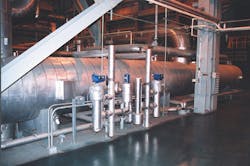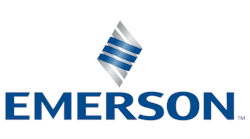Andreas Hessel
Andreas Hessel is the Marketing Manager for Rosemount Process Level products at Emerson Process Management. His responsibilities include supporting new products and matching product development with customer requirements. Hessel has been with Emerson since 2007, holding several positions within engineering, training and marketing. Hessel has an MSc in Technology Management and Economics from Chalmers University of Technology in Sweden. Mr. Hessel can be reached at [email protected].Kenny Heidel, P.E.
Kenny Heidel, P.E., is the Buoyancy Product Manager at Magnetrol International. He has a bachelor’s degree in Mechanical Engineering and more than seven years of experience working with industrial level measurement applications. Heidel can be reached at [email protected] or 630 969-4000, ext. 6703.
Q: How has technology for industrial level measurement and monitoring evolved over the past 10-20 years?
Heidel: Over the last 10-20 years, level measurement has changed drastically. Previous methods of level measurement primarily involved mechanical level switches, which are passive elements that only identify a level when that switch point is achieved. These devices do not provide continuous level measurement, which is what most users presently require. Other methods used in the past were differential pressure, but this technology can require significant calibration to ensure that the process specific gravity and temperature are known. The real game changer was the introduction of guided wave radar (GWR) to the market. This is a level measurement technology that could produce a continuous output and is independent of changing media characteristics, like specific gravity and temperature. GWR is an emerging technology that provides instrumentation people more flexibility to optimize their process.
Hessel: The need for more accurate and reliability continuous level measurements for inventory management, custody transfer, process efficiency and safety applications has driven the market over the last 10-20 years. We now have a broad range of technologies available, including mechanical displacers, capacitive, differential pressure, nuclear, laser, vibrating forks, ultrasonic, acoustic, guided wave radar and non-contacting radar. These technologies all have their strengths and weaknesses, but when selected and installed correctly they provide greater control, visibility into the process, improved safety and environmental compliance. In the same period we have seen much greater accuracy and sensitivity, improved reliability, step changes in user friendliness, wireless connectivity and increased diagnostic functionality.
READ ALSO: Q&A: What the FCC’s New Rules for Radar Level Measurement Devices Mean for End-Users
Q: How can industrial level measurement technology be leveraged today, in ways that were not previously possible, to increase the efficiency of industrial process applications?
Heidel: One key way to leverage level measurement is with respect to utilizing the heat rate measurement for power plants. It is important in a boiler feedwater heater to maintain a certain level of water; this helps the boiler run efficiently with the correct portion of steam being created. Deviations from the appropriate water level could cause damage to downstream equipment, or cause the heat required to increase and reduce efficiency. By using a continuous level measurement technology like guided wave radar, process engineers can ensure that the feed water is at the appropriate level for optimal performance.
Hessel: Mechanical displacers incorporate moving parts that can get stuck and require attention from maintenance teams. The need to reduce maintenance costs and remove false readings that can lead to events has resulted in many displacers being replaced by vibrating level fork switches, guided wave radar, or non-contacting radar. With no moving parts and minimal maintenance requirements, these automated devices are helping to reduce maintenance and device life cycle costs.
Automated continuous level measurements are more accurate and reliable than those taken manually and enable workers to perform other more pressing tasks, as well as keeping workers out of potentially hazardous areas. Greater level measurement accuracy increases process efficiency. For example, if a tank farm needs to keep a certain amount of material on hand at all times and the storage tanks are not filled to full capacity, the facility will incur the unnecessary expense of purchasing and maintaining additional storage vessels. Efficient use of storage space prevents the extra cost of needlessly acquiring more storage vessels.
Guided wave radar is often the technology of choice for level applications, but high-pressure saturated steam applications found in boilers, de-aerators, boiler feed water heaters, and steam-drums are challenging for this type of device. The high dielectric of the steam can cause up to 20 percent error, but it is possible to maintain accuracy also under these conditions. GWR with Dynamic Vapor Compensation uses a reference reflector at a fixed distance on a rigid single probe to measure the vapor dielectric. This measurement is then used to automatically compensate for vapor dielectric changes resulting in a final accuracy of within 2 percent.
The most significant change is the availability of integrated wireless level devices. Today, automated level measurements can be implemented in locations that were previously considered inaccessible, either because of their remote locations or because installation was cost prohibitive. Wireless devices are creating a whole new era, delivering reliable level measurements that save time for technicians, improve plant safety, and provide valuable insight to enable process optimization.
Q: In your experience with customers, where do you most often see missed opportunities regarding industrial level measurement technology and applications?
Heidel: People are creatures of habit, and opportunities are being missed with customers who are unwilling to change. Many users are simply more comfortable with older technologies, regardless of whether newer, more advanced technologies can offer advantages, such as, for example, additional diagnostics.
Hessel: Remotely located vessels that have no existing wiring infrastructure present some of the best opportunities for adding level measurements. Installing new cabling is time consuming, disruptive and expensive, preventing instruments being installed where they can add real value. The adoption of wireless networks in process plants is now widespread, which is enabling wireless level devices, such as GWR and vibrating forks level switches, to be quickly added to the automation system. This is enabling companies to make almost immediate and significant improvements in terms of measurement accuracy and worker efficiency and safety.
However, perhaps the biggest reason for missed opportunities is a reluctance to change. Most level applications will have a specific technology that will provide the best results, but it is easy for end-users to settle for something known instead of trying something they have limited experience with it. Take for example radar technology. Despite its long history and broad range of successful applications, it is still often perceived as a new technology. This can lead to end-users selecting less suitable, reliable and accurate technologies that they are more comfortable with. As vendors it is our job to demonstrate and apply the right technologies for each application to ensure the best results for customers; but ultimately end-users must also trust this advice.
Q: What are some examples of end-user applications where novel methods for industrial level measurement and monitoring are being utilized to produce a significant impact on the bottom line?
Heidel: As discussed above, helping to ensure the desired feed water level in boiler feedwater heaters and how it affects the overall heat rate of the power plant. Newer technologies offer more advanced, proactive diagnostics that allow users to better utilize technicians and reduce overall down time, which also affects the bottom line.
Hessel: Accurate level measurement of dry bulk solids, especially when stored in very large vessels or warehouses, has proven to be difficult and time consuming. The latest 3D acoustic scanner devices provide highly accurate and reliable continuous volume measurements, overcoming issues such as dust and uneven or sloping surfaces. Almost any kind of material can be monitored including difficult-to-measure fly ash and materials with a low dielectric. Increased accuracy improves inventory management, reducing the cost of carrying "safety stocks" and preventing incorrect inventory balances that causes errors in the calculation of cost of goods sold.
Q: How do you see industrial level measurement and monitoring evolving in years to come? How will the technology and systems for level measurement and monitoring be better tomorrow than they are today?
Heidel: The evolution from point contact switches to continuous level transmitters will continue. Many customers still have mechanical level switches used for level alarms and level monitoring. These will begin to be replaced with transmitters that have continuous level monitoring capability, as well as advanced diagnostics. The push will be to give customers as much information as possible so they can make smarter decisions and make their processes more efficient. Wireless will become more prevalent, but is very slow to be adopted in the process measurement market. Security is one concern limiting the uptake of wireless, and the other is the selection of a standard to use, as there are a few standards out there for wireless communication.
Hessel: When selected and installed correctly, the latest level measurement devices provide excellent accuracy and reliability, but there will still be some further improvements in terms of sensitivity and range. Going forward the focus of vendors will be on adding greater functionality and ease of use. We will see "smarter" transmitters with increased diagnostic capability, offering clear troubleshooting advice. For example, clear text messages communicating a problem or informing the user of need for maintenance will replace current error codes. The widespread implementation of wireless networks and availability of wireless level devices has made installation easier and more cost effective, but setting up instruments such as GWR still requires a degree of expertise and vendor support to ensure they work at optimal levels. New technology will simplify commissioning to ensure proper first-time installation.
This interview was conducted by Matt Migliore, Flow Control’s director of content. Reach Matt at [email protected].




